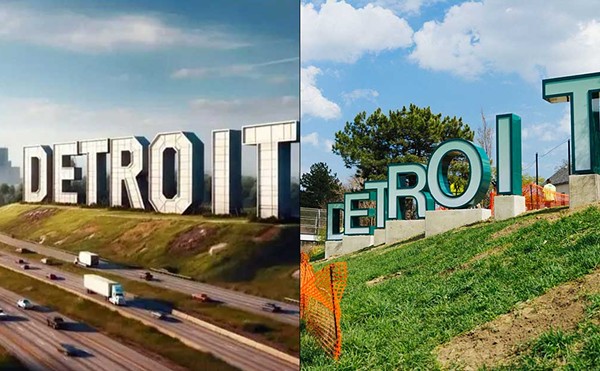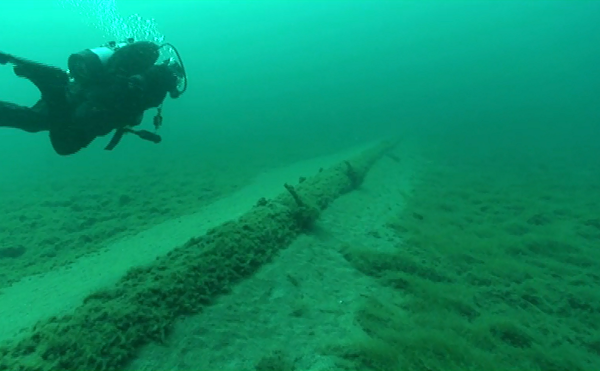Sadly, it seems safe to say that there are hundreds of thousands of people in the suburbs who know next to nothing about Highland Park, which is where, in a very real sense, the city we think of as Detroit was invented.
You may only see it as that stretch of Woodward south of McNichols where the street signs turn blue-and-white for a while. Much of what you can see of it from Woodward looks pretty grim. But if traffic is slow, you may notice, on the east side, just south of Highland Park’s junior-senior high school, an old red-brick building with some curiously elegant Pewabic tiles set high up in the walls. Out in front, set amid the tall grass among a bunch of scrub trees, is a fading historic marker which indicates that this is where the Motor City was born.
This was the womb of 15 million Model T Fords, the place mass production as we know it began. Here — actually, in what is now an old warehouse a block to the east — is where all those Model Ts rolled off the assembly lines from 1908 to 1927, transforming the nation far more than most political developments and wars.
The famous architect Albert Kahn designed this building, to which people from all over the planet flocked in search of decent wages and a better life. Here is where they came for the famous $5 day; here is where thousands came to escape the Kaiser or the czar and, when they weren’t on the line, took classes to learn English.
Detroit boomed, and the little enclave city of the assembly line did too.
The big city doubled its population from 1910-1920; tiny Highland Park’s increased 11 times, from 4,120 to 46,499, as sturdy workers’ homes filled its 2.9 square miles of streets.
Both have fallen on hard times since — but Highland Park has had a much harder time. Today, the city has only 16,385 people left, and gets scant attention, except when the TV crews come, as they did last week, because of a rash of house fires.
This year, Detroit 300 is spending $27 million on a blow-out celebration of the 300th anniversary of a log fort called Detroit. For the past year, they have honored old businesses and old people, sponsored family reunions and school programs.
Next month, it will all come to a head with a parade of tall ships up the Detroit River and a re-enactment of Cadillac’s landing. But Highland Park gets no respect. There will be no mention of what part it played in history, and no recognition that without that red-brick building, Detroit might well be about as important as Terre Haute.
Ironically, the chairman of Detroit 300 is one Edsel B. Ford, great-grandson of the man who started it all. Ford Motor left Highland Park a long time ago, moving production to the Rouge after the Model T; abandoning even a paper presence after 1974 and selling off the buildings in which it was born.
By that time, Chrysler was Highland Park’s economic mainstay, and kept the city afloat for years. But then in 1987, it too left. That wiped out 70 percent of the struggling city’s tax base overnight. To its credit, Chrysler ponied up $5 million to help start HP Devco, a nonprofit agency dedicated to community development and economic growth.
And it has made a big difference, thanks in part to the tireless energy of Harriet Saperstein, its devoted president. The remains of the old Chrysler site have gotten new life as the Oakland Industrial Park. Ryder trucking is there, and Ameritech, among others.
Budco Inc. moved its world headquarters to HP, bringing more than a thousand jobs.
But it’s not enough. The city is bleeding money. Highland Park is taking in about $14 million a year, and spending $16.5 million. The city is sinking fast, and is destined to have a receiver appointed soon to manage its economic affairs.
Yet Saperstein isn’t giving up. She’s hustling for businesses and grant money. “This should be seen as a sort of laboratory,” she mused over lunch recently. If a flat-out old rust-belt city can be revived, why not try to do so in Highland Park? How much easier to find solutions for a tiny city than an immense one, and then take those lessons on the road?
She’s done her best. She’s leveraged the $5 million Chrysler invested into $56 million in new development. She figures if the city could get another $5 million, it could stabilize its revenue situation. If Highland Park had $20 million, that would be enough to enable it to clean up all the messes and move forward once again.
Earlier this year, she and Mayor Linsey Porter asked Ford for $500,000 to help.
Over and over again, they have approached foundations and corporations, only to be asked, “What part is Ford Motor Company playing in this revitalization effort?” And the Fords turned them down. They said their money was better spent elsewhere. “Ford has been a very responsible corporate citizen. But not to Highland Park,” Saperstein said.
Yet how can anyone claim Ford owes the little city anything, after all this time?
Before you answer, stop in the new Farmer Jack in the Model T plaza on Woodward, another HP Devco success. There, large pictures show what this place was.
Symbolically, shoppers enter and walk under a framed and restored 1912 Model T.
The seed money for all Ford Motor Company became came from this place, and the town which grew up around it because Ford needed it, long ago.
The town needs Ford now. And the corporation that grew up here would do well to listen to one of its own slogans: Think Ford first.
Jack Lessenberry opines weekly for the Metro Times. E-mail [email protected]




